
Frullania is the only genus of liverworts in family Frullaniaceae. It contains the following species:

Gymnostomum is a genus of bryophyte in family Pottiaceae. It was first described by Christian Gottfried Daniel Nees von Esenbeck and Christian Friedrich Hornschuch
Western Australia has relatively few species of moss; the most recent census found just 192 taxa. This represents just 10% of Australia's total moss flora, even though Western Australia accounts for about one third of the Australia by area. This relatively low diversity has been attributed to the lack of rainforest in the state.

Grimmia is a genus of mosses (Bryophyta), originally named by Jakob Friedrich Ehrhart in honour of Johann Friedrich Carl Grimm, a physician and botanist from Gotha, Germany.
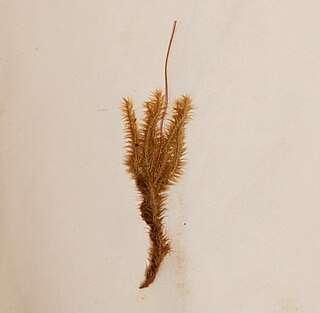
Breutelia is a genus of moss in the family Bartramiaceae. It has a worldwide distribution and contains about 200 species. Its name honours botanist Johann Christian Breutel (1788–1875). The type species is Breutelia arcuata.
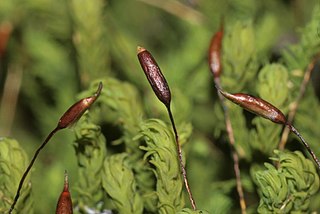
Anomodon is a genus of mosses in the family Thuidiaceae.

Racomitrium is a genus of mosses in the family Grimmiaceae established in 1818 by Samuel Elisée Bridel-Brideri. It contains the following species:

Didymodon is a genus of mosses belonging to the family Pottiaceae. The genus has a cosmopolitan distribution.

Neckera is a large genus of mosses belonging to the family Neckeraceae. The genus was first described by Johann Hedwig. The genus has a cosmopolitan distribution.

Plagiothecium is a genus of moss belonging to the family Plagiotheciaceae. It has a cosmopolitan distribution.

Rhynchostegium is a genus of pleurocarpous mosses belonging to the family Brachytheciaceae. The genus has a cosmopolitan distribution across different climatological regions except the polar regions, mostly in tropic to north temperate regions. The genus contains both aquatic and terrestrial species. The genus was named for their rostrate opercula. The type species of this genus is Rhynchostegium confertum (Dicks.) Schimp.

Tortella is a genus of mosses belonging to the family Pottiaceae. The genus was first described by Karl Müller and has a cosmopolitan distribution
Campylium is a genus of mosses belonging to the family Amblystegiaceae.
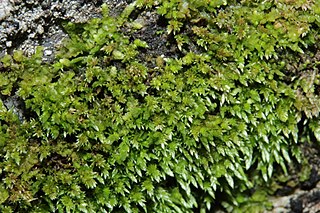
Anomobryum is a genus of mosses belonging to the family Bryaceae.

Homalothecium is a genus of mosses belonging to the family Brachytheciaceae.
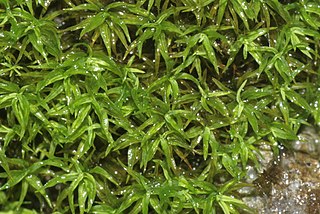
Trichostomum is a genus of mosses belonging to the family Pottiaceae.
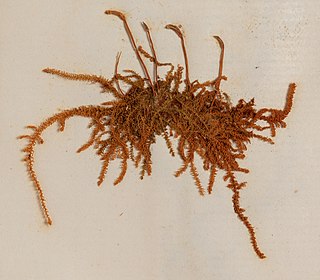
Racopilum is a genus of mosses belonging to the family Racopilaceae.















